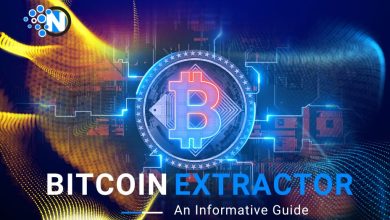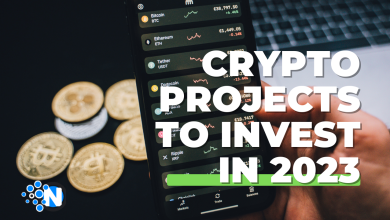The Nine Common Consensus Mechanisms About Crypto You Need to Know

Most cryptocurrencies and blockchains have a lot in common and work in similar ways. Still, one mechanism contributes to the unique quality and fundamental concepts of a blockchain—a consensus mechanism.
A consensus mechanism is a fault-tolerant technique used in computer and blockchain systems to establish the required agreement on a single data value or network state across distributed processes or multi-agent systems, such as cryptocurrencies. It comes in handy for many tasks, including record-keeping.
There are various consensus methods, all of which lay the groundwork for blockchain technology’s core characteristics: a decentralised, distributed, public ledger. In this article, we will briefly look into ten common consensus mechanisms, namely proof-of-work (PoW), proof-of-stake (PoS), delegated proof-of-stake (DPoS), proof-of-capacity (PoC), proof-of-activity (PoA), proof-of-burn (PoB), proof-of-assignment (PoA), proof-of-elapsed time (PoET), and proof-of-identity (PoI).
1. Proof-of-Work (PoW)
It was the first blockchain consensus mechanism developed. And the Bitcoin blockchain was the catalyst for its creation. It is also known as mining, and miners are referred to as nodes. Miners tackle complex mathematical puzzles that need a lot of computing power. Miners use many mining technologies for this, including CPU mining, GPU mining, FPGA mining, mining pools, ASIC mining, and more.
The computation difficulty is changed regularly, with a block processing time of around 10 minutes on average. That is when the bitcoin developers believe it is required for a constant and declining flow of new coins until the maximum number of 21 million coins is achieved. Interestingly, some platforms like BitiCodes do the job of explaining these mechanisms in a detailed manner. This particular website works as a mediator between crypto brokers and traders and will help you with your investment goals.
2. Proof-of-Stake (PoS)
It is the most popular alternative to the PoW consensus mechanism. Rather than investing in costly computer equipment in a race to mine blocks, a “validator” invests in the system’s currencies in this protocol.
Validators are generally compensated for their efforts by receiving all or a portion of the transaction fees from all of the transactions in the block they produced. Validators may also earn a certain quantity of coins as a result of inflation. The PoS uses this methodology to reward validators for maintaining the blockchain network.
While currently using the PoW consensus mechanism, Ethereum is transitioning to the PoS consensus mechanism.
3. Delegated Proof-of-Stake (DPoS)
One of the quickest blockchain consensus mechanisms is Delegated Proof-of-Stake (DPoS). When compared to PoW, this one can manage a more significant number of transactions. DPoS is commonly referred to as a digital democracy since users may stake their coins and vote for a certain number of delegates, thanks to its stake-weighted voting mechanism. TRON and EOS are a few cryptocurrency examples using this.
4. Proof-of-Capacity (PoC)
Proof-of-capacity (PoC) authentication methods store solutions to a cryptocurrency hashing issue in extra space on a device’s hard disk. Plotting and mining are two steps in the procedure. Users can use a storage device to make blocks once filled with solutions to mathematical puzzles. Users that find the solutions the fastest are allowed to construct a new block. As a result, those with the most storage space will have a better chance of creating a new block.
Burstcoin is a cryptocurrency that operates on the PoC. Storj and Chia are among the coins that use it.
5. Proof-of-Activity (PoA)
It is used to verify that all transactions on the blockchain are legitimate and that all miners reach a consensus. PoA combines the two other blockchain consensus mechanisms, namely Proof-of-Work (PoW) and Proof-of-Stake (PoS).
In a PoA, the mining process begins similarly to a PoW process, with multiple miners competing for higher computer power to locate a new block. The system changes to PoS when a new block is found (or mined), with the newly discovered block having simply a header and the miner’s reward address.
6. Proof-of-Burn (PoB)
Instead of putting money into expensive computer equipment, Proof-of-Burn (PoB) allows you to ‘burn’ coins by sending them to an address where they are permanently lost. You gain lifelong permission to mine on the system based on a random selection procedure by committing your money to never-never land.
Miners may burn the local money or the currency of an alternate chain, such as bitcoin, depending on how proof of burn is handled. The more coins you burn, the more likely you will be chosen to mine the next block.
7. Proof-of-Assignment (PoA)
Compared to its predecessors, Proof of Assignment (PoA) is a cryptographic consensus mechanism that uses less power and can run on relatively low-end hardware. PoA’s operating method enables simple, low-capacity mining activities to be performed using ordinary Internet of Things (IoT) applications.
8. Proof-of-Elapsed Time (PoET)
Intel has developed its alternative consensus mechanism known as Proof-of-Elapsed Time (PoET). This technology operates similarly to PoW, except it uses a lot less energy. It uses a lottery mechanism that distributes the odds of winning evenly across network members, ensuring that each node has an equal chance of winning.
9. Proof-of-Identity (PoI)
A user’s private key is compared to an authorised identity in this protocol. Proof-of-Identity (PoI) is a cryptographic piece of proof for a user’s private key cryptographically associated with a specific transaction. A blockchain network allows any identifiable user to produce a data block that may be delivered to anybody else on the network.




